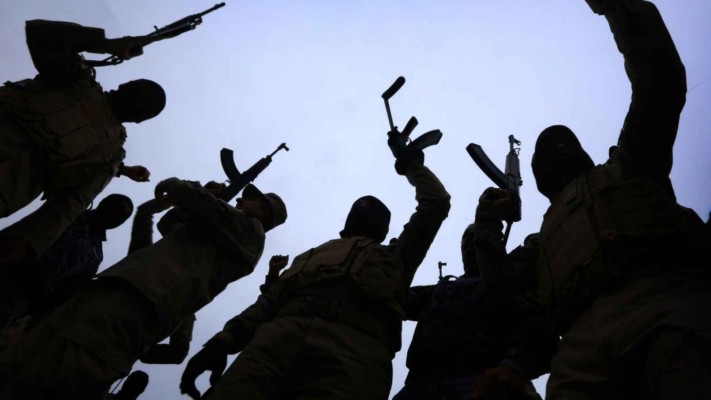
We’re at War
Matthew Continetti, a very thoughtful man, is trying to make sense of the current political moment. He spent some time at Stanford’s Hoover Institution, talked to some smart people, and came up with this:
Since 1992, however, the combinations have been all over the place. We have had united Democratic control and united Republican control, Republican presidents with Democratic Congresses and Democratic presidents with Republican Congresses, and both Republican and Democratic presidents with Congresses split between the parties. “The reestablishment of unified Democratic control under Bill Clinton,” writes Fiorina in his great new book, “began a two-decade-long (and counting) period of electoral outcomes that defy generalizations like those describing the three previous eras.”
Read the article. It’s unusually insightful. But when I see “1992,” I don’t think only about American elections. I think about the end of the Soviet Union, and with it a half-century of unusual history. I think that is the proper context for understanding what’s going on, both in America and throughout the world.
Most people think war is unusual and peace is the norm, but anyone who studies human history knows it’s the other way around. Mostly there’s war and the preparation for war, while peace, which is rare, only happens when someone wins a war and imposes conditions on the loser. Those conditions are usually codified in a “peace treaty,” and the parties resume preparation for the next war.
Then came the post-war period, the one that began with the decimation of Nazism and fascism. We took over Germany and Japan and effectively prevented them from rearming. For half a century, we and the Soviet Union imposed peace on most of the rest of the world. Funnily, this extended period of peace is called a war, albeit a “cold war,” but peace it was, and the Russians told half the world what to do, while it was up to us to manage the other half. This long period convinced a lot of people that peace was normal, an opinion that did not immediately change when the Soviet Empire imploded late last century.
Some serious thinkers, such as Francis Fukuyama, pronounced that, henceforth, American-style liberal democracy would dominate global politics, and even President Bill Clinton bought in. Turned out to be a false prophecy. The world reverted to normal, and there is now a global war. A fighting war, not a “cold” war. Except no one can see it. Yes, there are stories of fighting in Syria and Yemen. Pictures, even videos. But most people fail to see that these battlefields are part of a global war, in which we are very much involved.
As the target.
This stage of the war reminds me of trying to sort out all the players in the Balkans during the First World War. Countries, tribes and various ethnic and religious groups fought one another, and the big powers weighed in. It was virtually impossible to figure out where the boundaries lay, who was morally or historically entitled to sovereignty (Macedonia, for example) and independence. Alliances were formed and dissolved at a dizzying rate. So when I look at a map of Syria, Iraq and Iran, I think Balkans, 1916. Inevitably, the Germans, French and Brits, and sometimes the Italians, joined various campaigns. When the war ended, boundaries were settled, for a time, by the Peace Conference at Versailles. I’m pretty sure the national boundaries in the Middle East will be similarly defined by the winners of this war.
This war, like World War I, has global dimensions, but we understandably focus on one battlefield at a time. Yet it’s luminously clear that there is an anti-American alliance among the world’s leading tyrannies—at a minimum Russia, China, Iran, North Korea, Venezuela and Cuba. They aim to destroy us, as they say with tedious monotony, but hardly anyone here seems to notice. I ask the pundits “what do you think ‘death to America’ means?” They give me a funny look, as if that was the first time they’d thought about it. And the notion that we face a global enemy alliance seems fanciful to them.
Yet, look at Syria, where Assad is currently winning. Why? Because of Iranian fighters and their proxies. Until recently, that wasn’t good enough to save the Syrian dictator. Now it is, because the Iranians begged Putin to help them. Which he did. So the currently dominant force in Syria is composed of Iran and her jihadist proxies plus Russia, with some Chinese and North Korean help thrown in from time to time.
As they fight on in Syria, they are preparing to tackle us in the near future. There is extensive evidence of enemy infiltration of the United States, and our hemispheric neighbors. Just ask the commander of SOCOM:
Extremist networks like ISIS reach deep into our hemisphere, inspire would-be terrorists to conduct attacks in the region, or to attempt entry into the United States to do our citizens harm.”
Pressed to elaborate on ISIS movement in the Western Hemisphere, (Admiral) Tidd pointed to the at least 100 jihadists, by that government’s count, from Trinidad and Tobago who fought for ISIS abroad.
We’d better take this war seriously.
